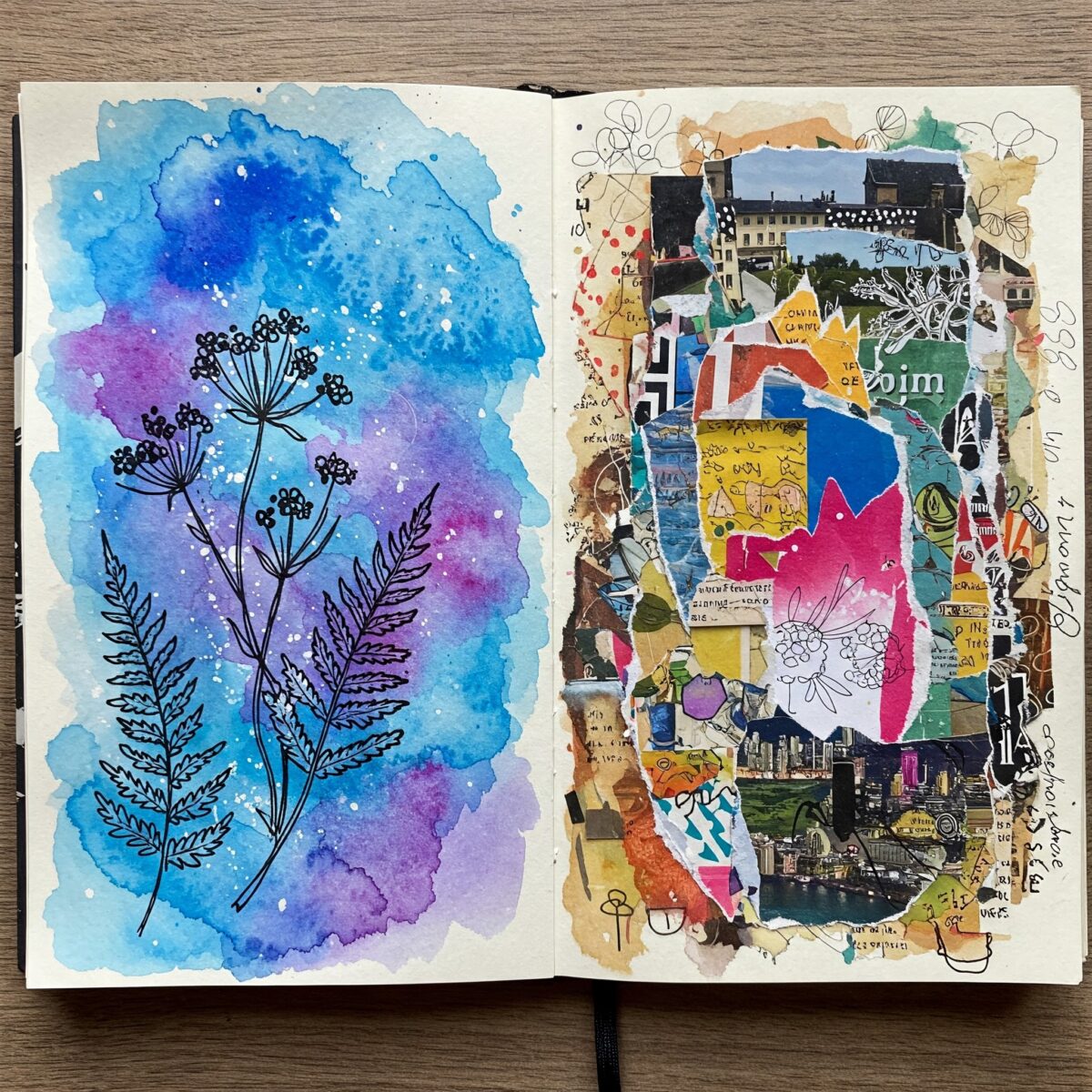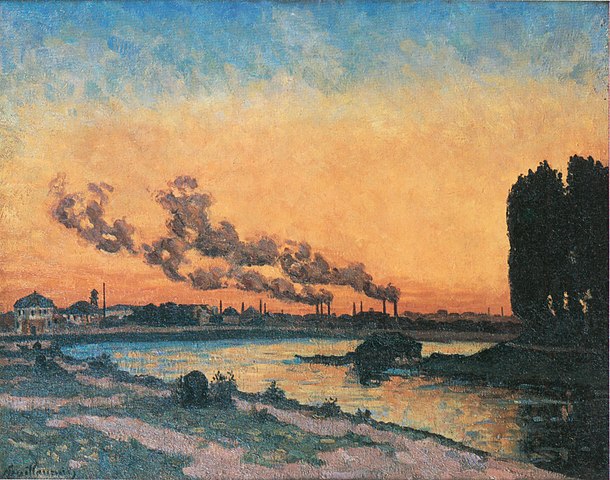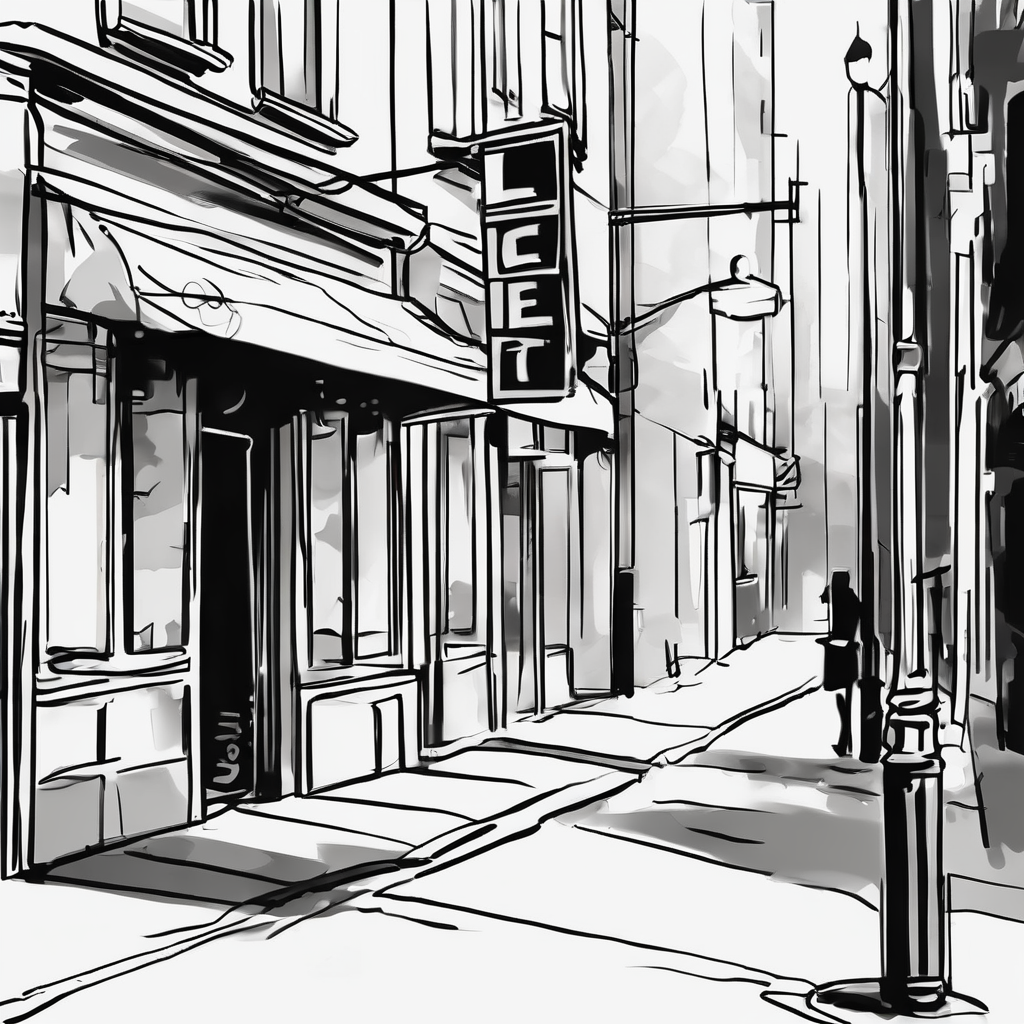Are you staring at a blank sketchbook page feeling completely stuck? We’ve all been there. Artist’s block can strike anyone, from beginners just starting their artistic journey to experienced artists who create daily. Thankfully, your sketchbook can be the perfect tool to break through creative roadblocks and reignite your artistic spark. In this guide, we’ll explore a variety of creative sketchbook ideas specifically designed to help you overcome artist’s block and transform those empty pages into playgrounds of inspiration.
Key Points:
- Artist’s block is a common challenge that affects creators at all skill levels
- Sketchbooks serve as safe spaces for experimentation without pressure
- Various creative exercises can help break through artistic roadblocks
- Consistent practice with diverse techniques builds artistic confidence
- Mixed media and unconventional approaches can spark fresh inspiration
Understanding Artist’s Block
Artist’s block happens when creative inspiration seems to vanish, leaving you frustrated and unable to make meaningful marks on your paper. It’s similar to writer’s block but affects visual artists. This creative standstill often stems from perfectionism, fear of failure, or simply running out of ideas. Recognizing artist’s block as a normal part of the creative process is the first step toward overcoming it.
Rather than viewing your sketchbook as a place for finished, perfect artwork, think of it as a laboratory for experimentation. When you approach your sketchbook with playfulness instead of pressure, you create the perfect conditions for creativity to flourish again.
Creative Sketchbook Ideas to Jumpstart Your Imagination
Your sketchbook should be a judgment-free zone where you can try new techniques, make mistakes, and discover unexpected directions. Here are some engaging exercises to help you fill those pages and overcome creative blocks:
1. Five-Minute Gesture Drawings
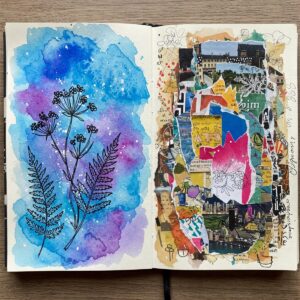
Set a timer for just five minutes and quickly sketch whatever’s in front of you—a plant, your hand, or even your breakfast. Focus on capturing the essential forms rather than details. The time constraint prevents overthinking and perfectionism.
“The purpose of the five-minute gesture drawing isn’t to create a masterpiece, but to warm up your hand-eye coordination and loosen your approach to making marks.”
Mastering Watercolor Transparency
2. Nature Collection Studies
Gather interesting natural objects like leaves, feathers, or stones. Arrange them on one page of your sketchbook, then create detailed observations of each item on the facing page. Document textures, colors, and patterns. This exercise connects you with the natural world while providing ready-made subject matter.
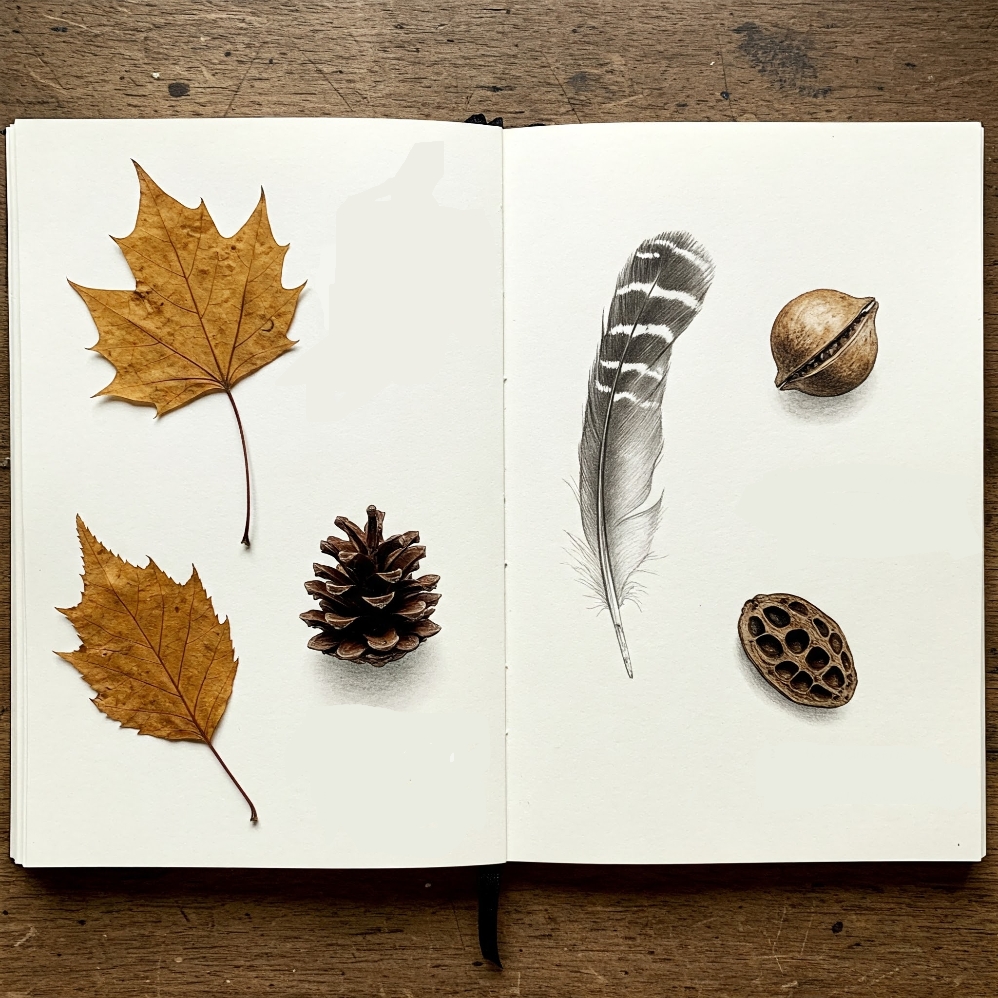
3. Blind Contour Drawing Challenge

For an extra challenge, create a grid of six blind contour drawings of different objects. You’ll be surprised how your line quality improves with practice!
Try drawing an object without looking at your paper. Keep your eyes fixed on the subject and your pen on the page. The results will be imperfect and possibly humorous, but this technique breaks the perfectionist mindset and helps you develop observation skills.
4. Color Palette Explorations
Create a series of small color swatches based on different themes:
- Colors from your favorite painting
- Seasonal color schemes
- Colors from a memorable photograph
- Emotional color palettes (what colors represent joy, calm, or energy?)
This exercise helps you understand color theory basics while building a personal color vocabulary.
5. Word-Prompt Illustration Challenge
Write five random words at the top of your page. These could be emotions, objects, or abstract concepts. Create small illustrations for each word, then try combining elements from different drawings to create something entirely new.
6. Pattern Development Exercise
Start with a simple geometric shape and gradually transform it across your sketchbook page. Add elements, modify lines, and play with repetition to create increasingly complex patterns. This meditative exercise can unlock creative flow.
Using AI Prompts for Sketchbook Inspiration
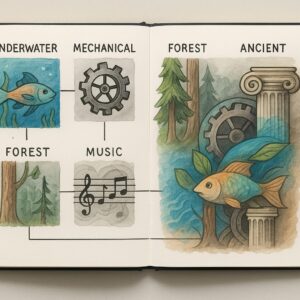
In today’s digital world, artificial intelligence offers fascinating new ways to spark your creativity. AI tools can provide unique prompts and concepts that might never have occurred to you, helping you break out of familiar patterns and explore fresh territory in your sketchbook.
How to Use AI for Creative Prompts
AI image generators and text tools can be valuable allies when you’re facing artist’s block. Here’s how to harness them effectively:
- Request unusual combinations: Ask AI to combine elements you wouldn’t normally put together
- Generate story scenarios: Use these narratives as inspiration for character or scene sketches
- Request visual descriptions: Have AI describe scenes in detail for you to interpret visually
- Create “what if” scenarios: Ask AI to reimagine familiar objects or characters
Sample AI Prompts for Sketchbook Ideas
Try these prompts with your favorite AI tool to generate unique sketching concepts:
For Character Design:
- “Describe a traveler from another dimension who collects unusual objects. What do they look like and what are they carrying?”
- “Create a character who is half mechanical and half organic, with a specific profession or purpose.”
- “Describe a mythological creature that combines three different animals and has a unique magical ability.”
For Landscape Studies:
- “Describe a landscape where two vastly different ecosystems meet (like desert and ocean or tundra and jungle).”
- “Create a detailed description of an ancient city being reclaimed by nature after 100 years of abandonment.”
- “Describe an otherworldly landscape with unusual geological features and atmospheric conditions.”

For Abstract Concept Exploration:
- “Generate five visual metaphors for the concept of ‘transformation.'”
- “Describe how you might visually represent the taste of your favorite food.”
- “Create a series of contrasting concepts: lightweight vs. heavy, smooth vs. rough, organized vs. chaotic.”
For more on using AI as a creative partner, check out AI art prompt engineering to craft even more effective prompts.
Mixed Media Approaches to Revitalize Your Sketchbook
When traditional drawing techniques feel stale, introducing new materials can immediately spark fresh ideas. Here are some mixed media approaches to try:
1. Collage and Draw
Cut interesting images from magazines or use your own photographs. Paste them into your sketchbook, then extend the scenes by drawing around and into them. This creates unexpected jumping-off points for your creativity.
2. Watercolor Background + Ink Drawing
Create loose watercolor washes as backgrounds, then add detailed pen drawings once the paint dries. The contrast between fluid paint and precise lines creates dynamic visual interest. Check out watercolor blending techniques for inspiration.
3. Texture Rubbings
Place textured objects (leaves, fabric, coins) under your sketchbook page and rub with the side of a pencil or crayon to capture the texture. Use these textural elements as starting points for further drawing or painting. For advanced texture ideas, explore texture painting techniques.
Daily Sketchbook Habits to Overcome Artist’s Block
Consistency is key to breaking through creative blocks. Here are some habits to incorporate into your routine:
Morning Coffee Sketches
Spend 10 minutes sketching while enjoying your morning beverage. This low-pressure habit builds discipline and starts your day with creativity.
Observation Journaling
Dedicate a section of your sketchbook to recording daily observations—an interesting shadow, a person’s gesture, or the way light falls across objects. These observations become a treasure trove of inspiration.
Weekly Theme Challenges
Assign a theme to each week (architecture, faces, food, etc.) and create at least one sketch related to that theme every day. This provides structure while allowing for personal interpretation.
Unconventional Sketchbook Ideas for Serious Blocks
When traditional approaches aren’t working, sometimes you need to break all the rules:
Destructive Creation
Intentionally “ruin” a page with random marks, splashes of paint, or coffee stains. Then find ways to transform the chaos into something meaningful. This removes the pressure of the blank page.
Upside-Down Drawing
Turn reference images upside-down and draw what you see. This forces your brain to focus on shapes and relationships rather than recognized objects.
Non-Dominant Hand Drawing
Use your less-coordinated hand to create sketches. The resulting imperfections often have a charming, expressive quality that’s hard to achieve with your dominant hand.
Collaborative Page Swaps
Exchange sketchbooks with an artist friend. Each person starts a drawing, then passes it to the other to complete. The unexpected directions will challenge your creative thinking.
Digital Tools to Complement Your Physical Sketchbook
While traditional sketchbooks have their charm, digital tools can offer additional ways to overcome blocks:
- Digital Sketchbook Apps: Programs like Procreate or Adobe Fresco let you experiment without wasting materials.
- Reference Collection Apps: Pinterest or Behance can help you gather visual inspiration.
- Prompt Generator Tools: Online tools can provide random drawing challenges when you’re out of ideas.
For more on digital options, check out AI art in 2024 for cutting-edge possibilities.
How to Make Your Sketchbook a Judgment-Free Zone
The biggest obstacle to overcoming artist’s block is often our own internal critic. Here are strategies to create a healthier relationship with your sketchbook:
- Designate “play pages” where anything goes
- Set a timer for quick sketches to prevent overthinking
- Resist showing your sketchbook to others until you’re comfortable with its imperfections
- Track your progress by dating pages so you can see improvement over time
- Embrace “failures” as necessary steps toward growth
Remember that even professional artists face creative blocks. As noted in debunking the 10,000-hour rule, artistic growth isn’t always linear—it includes plateaus and breakthroughs.
Finding Community Support for Your Sketchbook Journey
Sharing your creative process with others can provide motivation and fresh perspectives:
- Online challenges: Participate in Instagram drawing challenges like #Inktober or #SketchbookSaturday
- Local sketching groups: Join urban sketchers or coffee shop drawing meetups
- Online forums: Communities like Reddit’s r/SketchDaily offer daily prompts and supportive feedback
Learning from others while maintaining your unique voice creates the perfect balance for artistic growth.
Conclusion
Creative sketchbook ideas are powerful tools for beating artist’s block because they remove the pressure of perfection and reintroduce play into your artistic practice. By adopting various approaches—from five-minute gesture drawings to mixed media experimentation and even AI-generated prompts—you can transform your sketchbook from a source of anxiety into a wellspring of inspiration. Remember that the purpose of these exercises isn’t to create finished masterpieces but to keep your creative muscles active and receptive to new possibilities. The next time you face a creative block, turn to your sketchbook not as a place for perfection, but as a playground for exploration and discovery.
FAQ: Creative Sketchbook Ideas
How do I start a sketchbook habit?
Begin with short, consistent sessions (5-15 minutes daily) rather than occasional marathon sessions. Set realistic goals, like filling one page per day, and make your sketchbook easily accessible so you can grab it whenever inspiration strikes.
What are good sketchbook tour ideas?
For a compelling sketchbook tour, showcase your process rather than just finished pieces. Include experiments, failures, and breakthroughs. Organize by themes or chronologically to show your artistic evolution over time.
How can I find travel sketchbook inspiration?
Before traveling, research local architecture, wildlife, and cultural elements unique to your destination. Pack a small, portable sketchbook and limited supplies. Set aside specific times for sketching landmarks or capturing daily moments in your travel journal.
What are good alternatives to physical sketchbooks?
Digital sketchbook apps like Procreate, Adobe Fresco, or Sketchbook Pro offer flexibility with unlimited layers and undo options. Tablet devices with stylus support provide a similar drawing experience to traditional sketchbooks without the need for physical storage.
What are some themed sketchbook challenge ideas?
Try month-long challenges like “30 Days of Hands,” “Creature Design Week,” or “Architecture Studies.” Focus on specific skills like perspective drawing, color theory, or character expressions. Theme your sketchbook around a story or emotional journey for a cohesive project.

